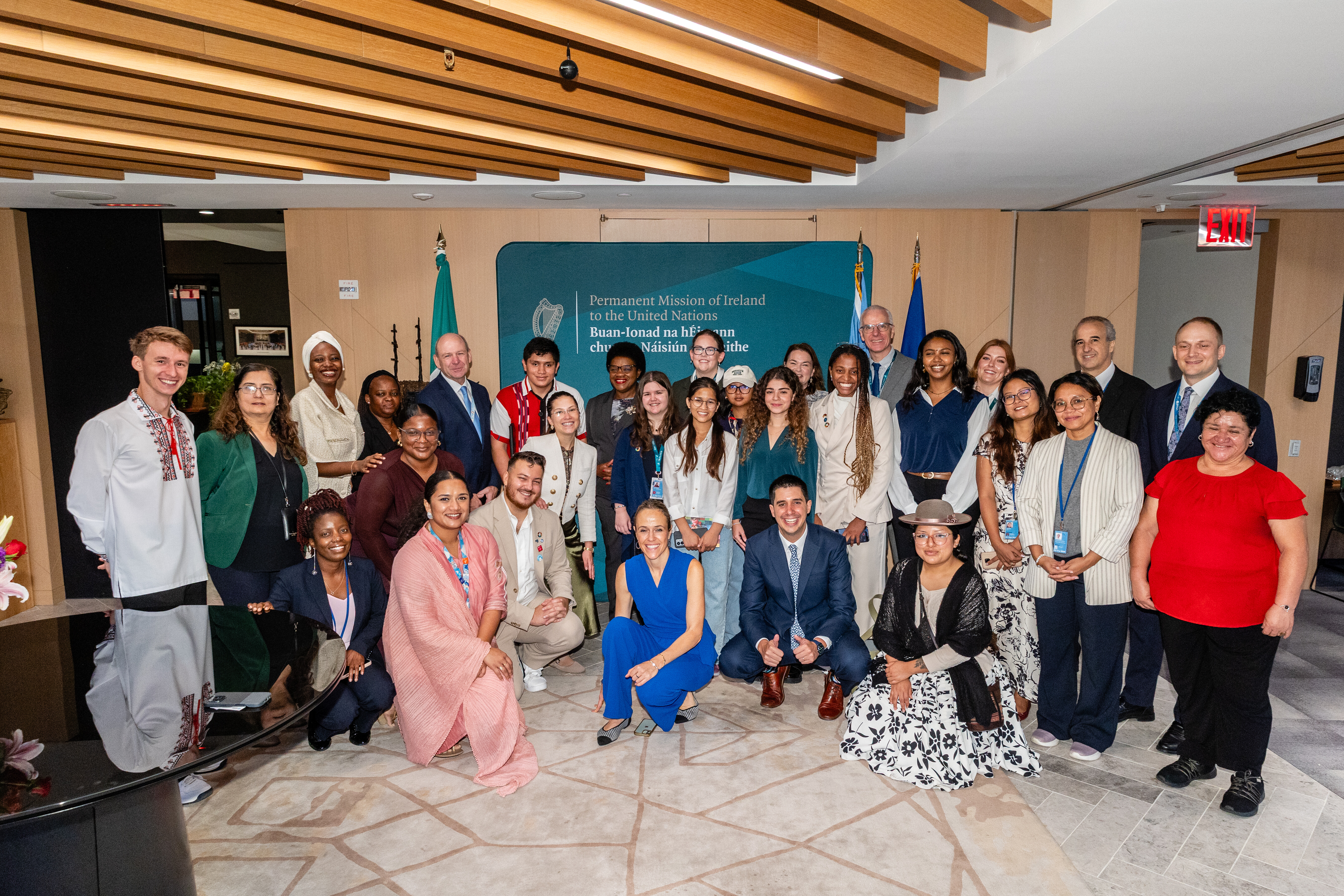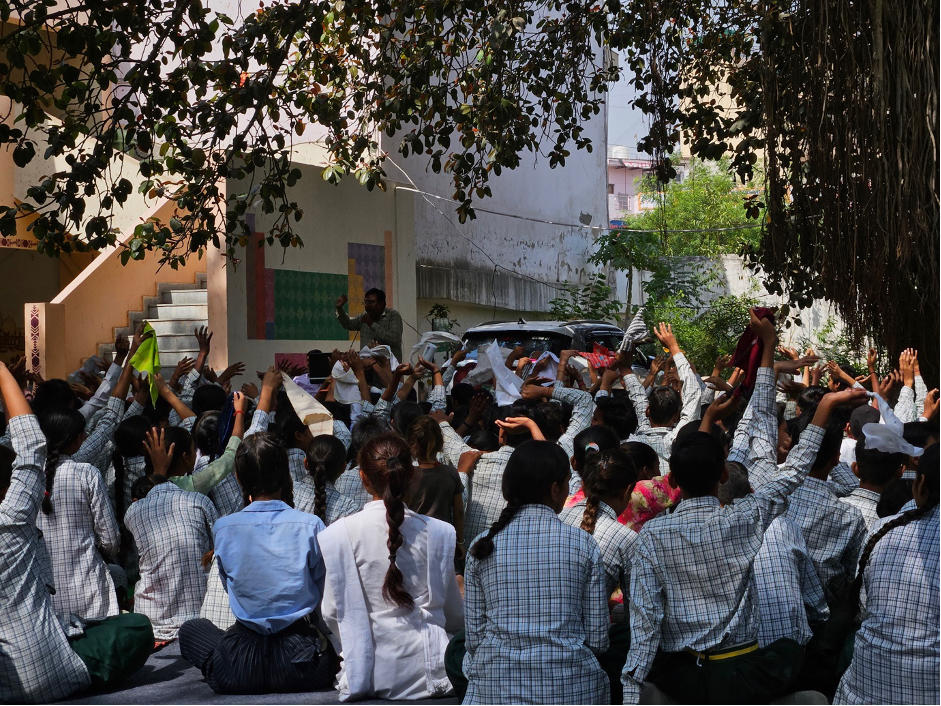Migration brings cultural diversity, but is it beneficial or detrimental to the host country?

Cultural heterogeneity appears to have had a positive impact on economic development.
Image: REUTERS/Bobby Yip
Stay up to date:
Migration
Migration policy is at the top of global political agenda. More than 1 million people have tried to cross the Mediterranean to reach Europe in the past two years. This has been largely caused by the displacement of people from war-torn countries such as Syria, Afghanistan, and also North Africa.
The European Union adopted the EU resettlement scheme in September 2015, which proposed the resettlement of 160,000 asylum-seekers from frontline EU member states over a two-year period from September 2015 to September 2017. Progress, however, has been slow. As of September 2016, the UNHCR reports that only 3% of the target has been reached.
Meanwhile new walls have been announced, or have been built. Some are real, such as the fence that Hungary intends to reinforce on its border with Serbia. There are also virtual barriers impeding migrants who want to cross from France to the UK, or from Italy to France through Ventimiglia.
The sentiment of fear and reluctance towards immigrants is increased because no one can convincingly predict the effect of a more diverse society on economic wellbeing.
Diversity and development
Stakeholders dispute whether cultural diversity creates economic costs or benefits. On one hand, a richer pool of expertise and experiences can create organisational synergies, leading to better outcomes for all. At a macro level, diverse societal norms, customs, and ethics can nurture technological innovation, the diffusion of new ideas, and so the production of a greater variety of goods and services (Ager and Brückner 2013, Ottaviano and Peri 2006). On the other hand, heterogeneous environments may produce coordination problems – for instance, when many languages are spoken – increasing transaction costs (Gören 2014, Easterly and Levine 1997). Racial fragmentation can also adversely affect social cohesion and interpersonal trust, and create irreconcilable divisions (Alesina and La Ferrara 2005, Montalvo and Reynal-Querol 2005, Esteban and Ray 2011).
In a recent paper, we explore how, and how much, immigration affects economic development through its effect on the cultural and ethnic composition of the destination country (Bove and Elia 2017). Most existing studies are cross-sectional, and explore the effect of ethnic and linguistic diversity on economic growth using time-invariant measures based on language and ethnicity (Alesina et al. 2003, Montalvo and Reynal-Querol 2005, Gören 2014). The racial and ethnic composition of modern societies have dramatically changed in the last few decades, however, as a consequence of mass migration. Between 1960 and 2000 the global migrant stock increased from 92 million to 165 million (Özden et al. 2011). By 2010 it reached 222 million (UNDESA 2016). Arguably the effect of cultural heterogeneity is likely to differ over time.
This is confirmed by Figure 1, which displays the percentage changes in birthplace diversity between 1960 and 2010, for all world countries. We used an almost-exhaustive dataset on international migration between 1960 and 2010, and computed diversity by identifying the nationality of the immigrants.1

More importantly, the existing cross-country research combines low- and high-income countries, neglecting the possibility that diversity could play a different role at different stages of development. Previous estimates were unlikely to capture the complexity of the relationship because they provided an average estimate. Recently released data on migration show how important it is to focus on less-developed countries. Between 1960 and 2000, South-South migration dominated global trends and was half of all international migration in 2000 (Özden et al. 2011). In 2015 almost half of international migrants lived outside Europe and Northern America (UNDESA 2016).
This lack of attention to the initial level of development of a country is more remarkable if we consider cross-country empirical research on growth, which reveals substantial differences between the aggregate production functions of economies with different initial conditions (Durlauf and Johnson 1995), a theoretical consequence of endogenous growth theories (Vandenbussche et al. 2006). We therefore revisit the empirical relationship between cultural heterogeneity and growth, and explore whether this relationship depends on the level of development of a country.
By using data on a large sample of world economies for 1960-2010,2 we construct two indexes of diversity:
- Fractionalisation: the likelihood that two individuals randomly selected from the population were born in different countries
- Polarisation: how far the distribution of the groups in one country is from a bipolar distribution where there are only two groups of equal size.
Causality can run both ways – countries that have a higher growth rate might attract more immigrants from a variety of origins, thereby increasing the degree of diversity. Therefore heterogeneity might be the effect rather than the cause of economic growth. Also immigration policies could be important drivers of immigration and, if unaccounted for, they could lead to incorrect inferences.
To address this we exploit the dyadic nature of our dataset to predict countries’ bilateral migration flows using a set of pre-determined or ‘exogenous’ dyadic variables such as geographic distance. We then use the predicted immigration flows to construct predicted indexes of diversity. This approach allows us to isolate the portion of the correlation between diversity and economic growth that is due to the causal effect of diversity.
We also exploit the time dimension of our dataset to control for unobserved heterogeneity by estimating a dynamic panel data model. This approach would remove any time-invariant country-specific unobserved factors that might possibly drive the relationship between diversity and economic growth.
We find that both indices of cultural heterogeneity – fractionalisation and polarisation – have a positive impact on the growth rate of GDP over long time periods. For, example, between 1960 and 2010, the growth rate of per capita GDP increased by about 0.15 percentage points when the growth rate of fractionalisation variable increased by one percentage point.
Does the effect of diversity on growth differ between developing and developed economies?
The literature on immigration emphasises that immigrants represent human resources, particularly appropriate for innovation and technological progress (Bodvarsson and Van den Berg 2013). So, as with the effect of education, the level of heterogeneity in their composition should enhance human capital formation and favour the adoption of new technologies (Nelson and Phelps 1966). Rich countries are closer to the technological frontier, thus the strength of the catch-up effect becomes smaller the more developed the host country is. This implies that developing economies would benefit the most from diversity.
To test this hypothesis, we split countries into two subgroups according to their initial level of development, and find that developing economies are more likely to experience an increase in GDP growth rate following changes in the degree of diversity. The most conservative estimates suggest that a one percentage point increase in the growth rate of fractionalisation (polarisation) boosts per capita output by about 0.1 percentage points in developing countries.
Our evidence suggests that immigration-fuelled diversity is good for economic growth. We recommend more openness to immigration so as to reap the large unrealised benefits from an increased range of skills and ideas in the destination country. Cultural diversity is a phenomenon that is continually changing, and difficult to define. Individuals have many observable characteristics – race, language, religion, nationality, wealth, education – but only some categories have economic salience. Because we don’t yet know which markers of identity are economically important, this subject will be a fertile area of study for the foreseeable future.
References
Ager, P and M Brückner (2013), “Cultural diversity and economic growth: Evidence from the US during the age of mass migration” European Economic Review, 64, 76-97.
Alesina, A, A Devleeschauwer, W Easterly, S Kurlat and R Wacziarg (2003), “Fractionalization”, Journal of Economic Growth, 8(2), 155-194.
Alesina, A, J Harnoss and H Rapoport (2016), “Birthplace diversity and economic prosperity”, Journal of Economic Growth, 21(2), 101-138.
Alesina, A and E La Ferrara (2005), “Ethnic Diversity and Economic Performance”, Journal of Economic Literature, 762-800.
Bodvarsson, Ö B and H Van den Berg (2013), “Economic growth and immigration”, in The Economics of Immigration (pp. 217-248). Springer Berlin Heidelberg.
Bove, V and L Elia (2017), “Migration, Diversity, and Economic Growth”, World Development, 89, 227-239.
Durlauf, S N and P A Johnson (1995), “Multiple regimes and cross-country growth behaviour”, Journal of Applied Econometrics, 10(4), 365-384.
Gören, E (2014), “How ethnic diversity affects economic growth”, World Development, 59, 275-297.
Easterly, W and R Levine (1997), “Africa's growth tragedy: policies and ethnic divisions”, The Quarterly Journal of Economics, 1203-1250.
Esteban, J and D Ray (2011), “Linking conflict to inequality and polarization”, The American Economic Review, 101(4), 1345–1374.
Montalvo, J G and M Reynal-Querol (2005), “Ethnic diversity and economic development”, Journal of Development Economics, 76(2), 293-323.
Nelson, R R and E S Phelps (1966), “Investment in humans, technological diffusion, and economic growth”, The American Economic Review, 69-75.
Ottaviano, G I and G Peri (2006), “The economic value of cultural diversity: evidence from US cities”, Journal of Economic Geography, 6(1), 9-44.
Özden, Ç, C R Parsons, M Schiff and T L Walmsley (2011), “Where on earth is everybody? The evolution of global bilateral migration 1960–2000”, The World Bank Economic Review, 25(1), 12-56.
UNDESA (2016), International Migration Report 2015: Highlights (ST/ESA/SER.A/375).
Vandenbussche, J, P Aghion and C Meghir (2006), “Growth, distance to frontier and composition of human capital”, Journal of Economic Growth, 11(2), 97-127.
Endnotes
[1] In a similar vein, Alesina, Harnoss, and Rapoport (2016) computed diversity according to the nationality of immigrants and found that diversity of skilled immigration relates positively to economic development.
[2] Data on migrant stocks—the number of people born in a country other than that in which they live—are taken from the World Bank Global Bilateral Migration Database for 1960 to 2010, and recently integrated throughout 2013 using the Bilateral Migration Matrix.
Don't miss any update on this topic
Create a free account and access your personalized content collection with our latest publications and analyses.
License and Republishing
World Economic Forum articles may be republished in accordance with the Creative Commons Attribution-NonCommercial-NoDerivatives 4.0 International Public License, and in accordance with our Terms of Use.
The views expressed in this article are those of the author alone and not the World Economic Forum.
Forum Stories newsletter
Bringing you weekly curated insights and analysis on the global issues that matter.
More on Youth PerspectivesSee all
Christie Burley and Inés Yábar
November 5, 2025
Valeria Tafoya
October 10, 2025
Shankar Keshav Prasad
September 15, 2025
Corinne Brenner and Mandë Holford
September 4, 2025
Katerina Hoskova
August 26, 2025






